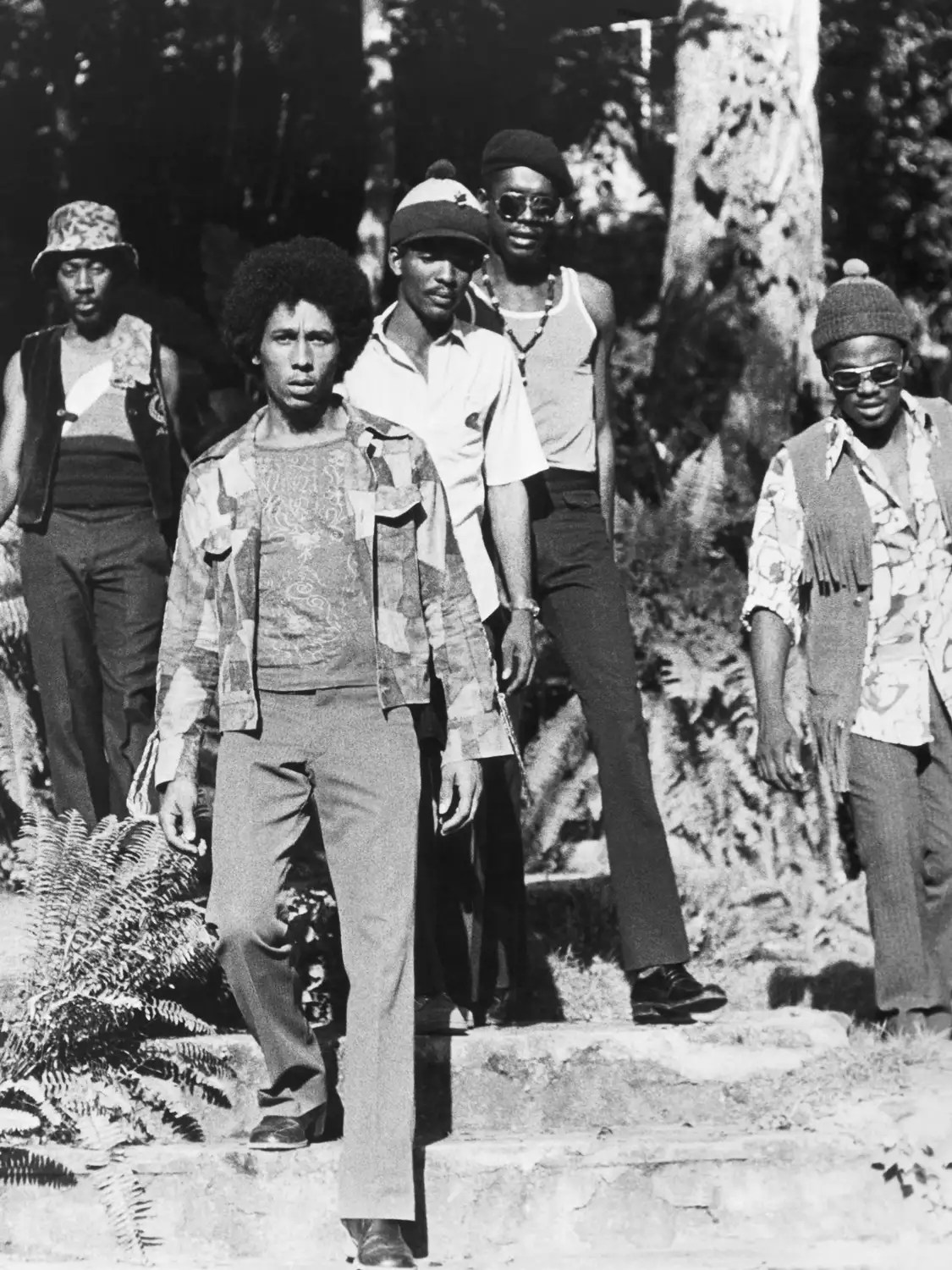Bob Marley.Photo:Sigfrid Casals/Cover/Getty

Sigfrid Casals/Cover/Getty
It’s not a show, it’s a cultural shock wave. Wafting in on gusts of Jamaican ganja (pot), Bob Marley, the man with the corkscrew curls — called dreadlocks — leaps onstage, hangs a portrait of the late Ethiopian Emperor Haile Selassie on an amplifier, shouts a dedication to “Rastafar-I,” and breaks into a song of warning: “Lively up yourself, and don’t be no drag/ Lively up youself cause reggae is another bag.”
So much for the warm-up near the Trenchtown slum in Kingston, Jamaica where Marley and the hypnotically repetitive reggae rhythm got started. So much for the Caucasian cashbox reggae of Harry Nilsson, Paul McCartney, Cher (yet) and Eric Clapton with his 1974 hit version of Marley’s “I Shot the Sheriff.” Barring a failure to “lively up” U.S. Customs, Bob Marley and the Wailers crash into Philly this week with the authentic thing. Or what’s left of it.
Bob Marley on June 7, 1980.Pete Still/Redferns

Pete Still/Redferns
Marley, now 30, is both star and potential political force in volatile Jamaica, but, his lyric aside, has never shot a sheriff or anyone else. His tunes do bear menacing titles like “Revolution” and “Burning and Looting,” but he disclaims charges of rabble-rousing: “We’re not talking about burning and looting for material goods and things. We only want to burn capitalistic illusions.” But he adds, paraphrasing the words of a new composition: “Until the philosophy wherein one race is superior and one inferior is permanently abandoned and discredited…there is war.”
That egalitarian philosophy derives not from reading Marx but from Marley’s own personal experience growing up poor and half-white in a white-ruled colony. He only saw his father, a British army captain, “one time or two,” he recalls. “I find me mother work for t’irty shillings a week,” he says, lapsing into Jamaican patois. “On dis, she had to send me to school, buy me shoes and lunches. Me wonder what a-gwan on.”
Never miss a story — sign up forPEOPLE’s free daily newsletterto stay up-to-date on the best of what PEOPLE has to offer, from celebrity news to compelling human interest stories.
Bob Marley (second from left) with his band the Wailers, circa 1972. L-R Earl Lindo, Carlton Barrett, Peter Tosh, Aston Family Man Barrett.Michael Ochs Archives/Getty

Michael Ochs Archives/Getty
The climactic point in Marley’s life and career was his conversion in 1967 to his exotic and then much-abhorred sect — a peculiarly Caribbean blending of mysticism and back-to-Africa sentiments. According to Marley, Selassie — or Jah (as Rastas call him) — appeared personally in a vision which brought Bob around. Later Marley, despite the disapproval of his devoutly Christian mother, began to let his hair grow into serpentine dreadlocks in obedience to the Bible, which forbids males from touching scissors or comb to hair.
Bob Marley on May 31, 1973.Michael Putland/Getty

Michael Putland/Getty
Today Marley travels not with groupies but his Rasta retinue, including a well-stocked “herbsman.” He straddles celebrity with Rasta ascetism, living communal style in the Waiters' Kingston compound, a large, ramshackle English colonial manse, plus a house out back being converted into a sound studio. Assorted Wailers, local musicians and Rasta brethren wander freely through the house, puffing on enormous cone-shaped “spliffs” stuffed with Jamaican cannabis.
The house is closer to the Governor’s Mansion than it is to Marley’s old Trenchtown stomping grounds, but Marley sees no sellout there. “People got to spread out a little,” he says. So too he explains away such conspicuous symbols of consumption as the $15,000 silver BMW he recently acquired. “BMW? That stands for Bob Marley and the Wailers,” he figures. “It seemed like the car we are supposed to have.”
source: people.com